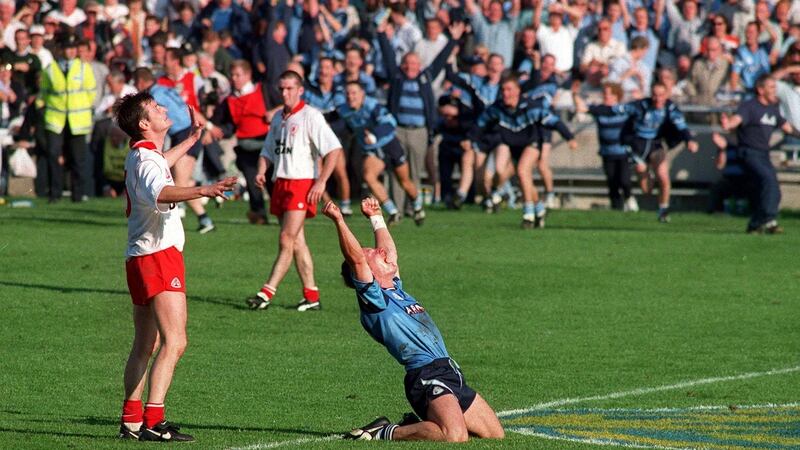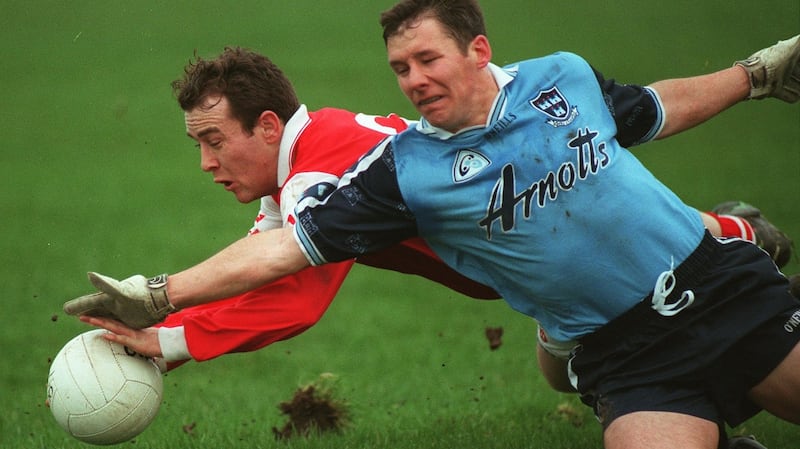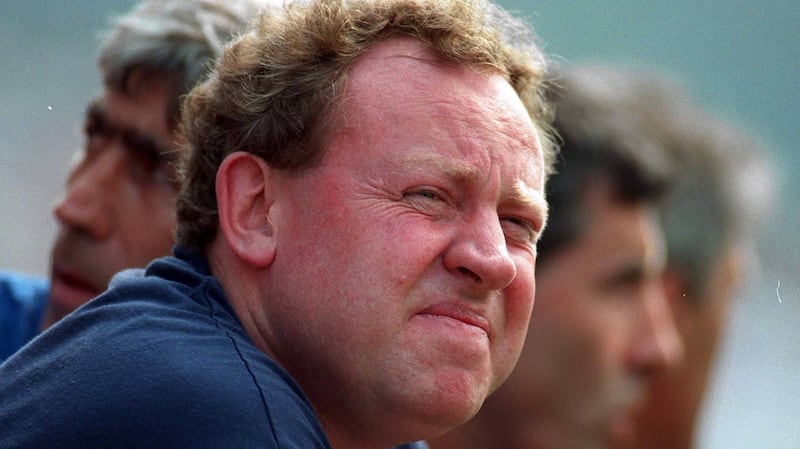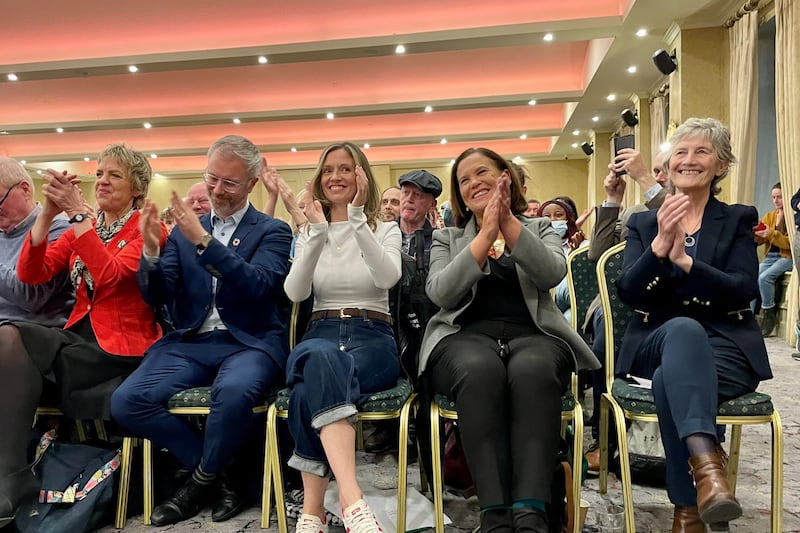There was much in retrospect that looks obvious about Jim Gavin’s playing days when tracing his development into the most successful Dublin football manager in history; the value he placed on hard work, an unflinching attitude to duty and a mind sharp enough to absorb instructions and implement them without constant supervision.
Yet ask the management from 1995, who guided the county to a first All-Ireland in 12 years, and they will say the trail from player to manager looks a lot clearer in retrospect than it did 23 years ago.
For a start, the team was full of people who would make an impact on management in the decades to come.
Jim Brogan was a selector in the mid-1990s and played the same role with Gavin when the latter took the Dublin U-21s to All-Ireland success in 2010 and '12. He recalls that future managers weren't thin on the ground in the 1990s.
“Almost all of the [1995] team have managed at club or inter-county. I’d say very few All-Ireland winning teams have produced as many.”
More than half of the 18 players that pipped Tyrone by a point in the final 23 years ago went on to have serious involvements with high-profile teams. Seven years ago, Pat Gilroy ended the 16-year wait for the next Sam Maguire. Dessie Farrell guided two U-21 teams to All-Ireland success. Mick Deegan managed the 2008 juniors to the All-Ireland whereas John O'Leary and Paul Bealin managed other counties.
This year Paul Clarke and Jason Sherlock are in the Dublin backroom team. High points on the club scale are Paul Curran taking Ballymun Kickhams all the way to the 2013 club final and Mick Galvin's Dublin championship with Na Fianna.
Pre-eminent in all of this, however, is Gavin, with his four senior All-Irelands and national leagues and his one championship defeat in five seasons, as well as the best long-term league record of any trainer or manager.
Pat O’Neill was in charge of what he recalls as the collegiate management team in 1995. His doubts about Gavin as a manager were more practical, as he felt a burgeoning career in aviation would make such a move more difficult.
As manager of Dublin for the past six years, Gavin is often portrayed in broad brush strokes: military background, exhaustive planner, obsessed with tactics, impenetrable by media.
Playing career
This overlooks the chief lessons of his own playing career, chiefly, the value of hard work, the need to subdue individual ambitions for the good of the collective, the importance of players being able to analyse and adapt and sustain a perennial ambition.
O’Neill was the manager under whom the young Gavin debuted and enjoyed most success from his first appearance against Louth on 15th November 1992 until his last as a replacement in the league against Galway on 31st March 2002.
Even he wasn’t immediately sure what to do with the young Round Towers forward whose initial appearances were in the full-forward line.

“Size confined him there, initially, but it was also obvious that he could get through more work so that’s why he moved out,” recalls O’Neill.
Things broke well for him in that first season. The league final was a rerun of the previous year's All-Ireland, against Donegal and it required a replay. After the first day, there were a couple of vacancies because Charlie Redmond and Keith Barr had been sent off.
Gavin hadn't been picked for a few matches at that stage but got the nod at wing forward for the replay, which swiftly became more challenging after centre forward Tom Carr was dismissed less than two minutes into the game. He played his part in a low-scoring victory, 0-10 to 0-6, and in The Irish Times, John O'Keeffe commended the five Dublin forwards for their work rate and careful use of possession.
In the newspaper's 'Score by score' account, this was the entry for the 20th minute: "Jim Gavin scores the best point of the match, having fielded, turned the defence and pointed from 30 yards."
Carr would in time manage Dublin and Gavin but he remembers being impressed by the newcomer.
“Jim was low-key when he started. He didn’t say a lot but he was very good at playing a role and a great worker. He was also quite mature even when a young player. A great attitude and he gave it everything. Relentless.”
According to O’Neill, any reticence about speaking was soon relaxed.
“He became quite influential in the team talks. He was very cool and calm whereas for others passions would be running high. His contributions were factual, functional and objective but also important and to the point.”
Important match
It could be said that the most important match of 1994 for Jim Gavin was the Leinster final even though he wasn’t involved. The follow-up to the 1993 league success had been fitful and for career reasons he missed a lot of 1994 although when available he was named in that year’s All-Ireland final panel.
What happened in the Leinster final was that Meath's right wing back Graham Geraghty scored 1-2 from play. In 1993, from the same position, Derry's John McGurk kicked the winner in the All-Ireland semi-final. Ciarán O'Sullivan from Cork was another attacking wing back.
It was dawning on Dublin that they needed more security against counter-attacks. O’Neill decided to see if Jim Gavin could defend.

“I remember playing him at wing back in a challenge game against Tyrone in sub-zero conditions in Parnell Park one January. We had been experiencing problems in terms of wing backs doing damage against us.
“I remember having a discussion with him later when he challenged me on being played in defence and wanted to know what his role was. I said that it was all a matter of what was best for the team, which he accepted but he wasn’t happy.”
Having satisfied themselves that he could defend, Dublin implemented a new role for Gavin. It would become one of the keystones of the All-Ireland victory. Lining out at left wing forward – with the de rigeur complication that he wear 10 and play 12 – he would get in the way of any expansionist ambitions on the part of opposing defenders.
The tactic was road tested in another challenge match, early in 1995 against Roscommon.
“He was given a role not dissimilar to the one he would play to see how it would work out. Part of that was to impress on people that our evaluation of forwards wasn’t completely based on the scoreboard.
“It was suggesting that whereas your primary responsibility was to create opportunities for scores or to get scores, then the focus was very much that if you couldn’t get a score, you shouldn’t be there in the forwards.
“We tried to emphasise other things like work rate and this defensive role. He played on Geraghty and O’Sullivan effectively with the instructions that if this guy looks up, no matter where he is on the field, you’re to be there challenging him. It wasn’t the same as they play now; it was more a man-to-man role and he was very, very good at it.”
Purely defensive
Pat O’Neill qualifies the role.
“It wasn’t purely defensive. He wasn’t given the job of having to go back and cover in defence. That wasn’t it. His job was to stop his marker coming up the pitch from wing back but if his man stayed back, fine. He played as an orthodox wing forward and didn’t have to track back but if they came, the instructions were to mark them – stop them getting forward and coming for the return pass.”
For all the thinking that went into the tactic, it wasn’t sprung until strictly necessary. Between one thing and another, Gavin hadn’t actually started a championship match for Dublin for two years when he lined out against Meath on 30th July 1995.
It may or may not have been significant in a future management career in which announced teams might as well come with all the breathless equivocation of radio ads for financial products but in the watershed Leinster final of that year he was sprung without warning to fill the boots of AN Other.

Sure enough, Geraghty was shackled – managing just a point, a total equalled by Gavin. Traditionalists were shocked at a forward being happy to break even with his marker, a manager of another county privately described it as ‘not football’. In the All-Ireland semi-final, Cork and Ciarán O’Sullivan were to be the opponents.
O'Sullivan was a top-class attacking wing back. That season he had kicked 0-3 from play against Waterford and 0-2 in the Munster final against Kerry. That would be the end of his championship scoring, as the report of Dublin's win in The Irish Times noted.
“Mention should also be made of Jim Gavin’s low-profile but significant role in subduing Ciarán O’Sullivan. Forwards aren’t generally sent out to keep defenders quiet but O’Sullivan is such a pivotal personality in his team that it constituted a good day’s work for Gavin.”
That year’s All-Ireland success was emphatically a destination rather than a milestone. Few embodied that to a greater extent than Gavin.
Senior player
The remainder of the decade was his most consistent run in the Dublin jersey. Between 1996 and 2000, he started all 14 of the county’s championship matches but not even a provincial medal studded the way. By the time he gathered another, in 2002, his race was run.
Tom Carr managed him for most of that concluding phase and remembers a valuable team player.
When the '95 team won their first, it finished them. It wasn't like the current team. When they won their first All-Ireland it kicked them on."
“He was a senior player by then but there was no trace of that in his attitude – no looking for special treatment as a senior player. He was one of the few All-Ireland medallists left on the team. He was great and you could ask his opinion on anything and get an honest answer – he was never looking for recognition and just doing the job he was asked to.
“He played more in the full forward line towards the end, probably because he was getting a bit tired. He was our nominated free-taker and although he had mixed fortunes – he wouldn’t have been as consistent as the likes of Charlie Redmond or these days, Dean Rock – but he had a great temperament.”
As one of the younger players on the 1995 team, Gavin might have hoped for more in his remaining career but the bulk of the side had been coming close for years before finally capturing the prize.
“When the ’95 team won their first, it finished them,” says Carr. It wasn’t like the current team. When they won their first All-Ireland it kicked them on.”
Wonder where that drive might have come from.



















